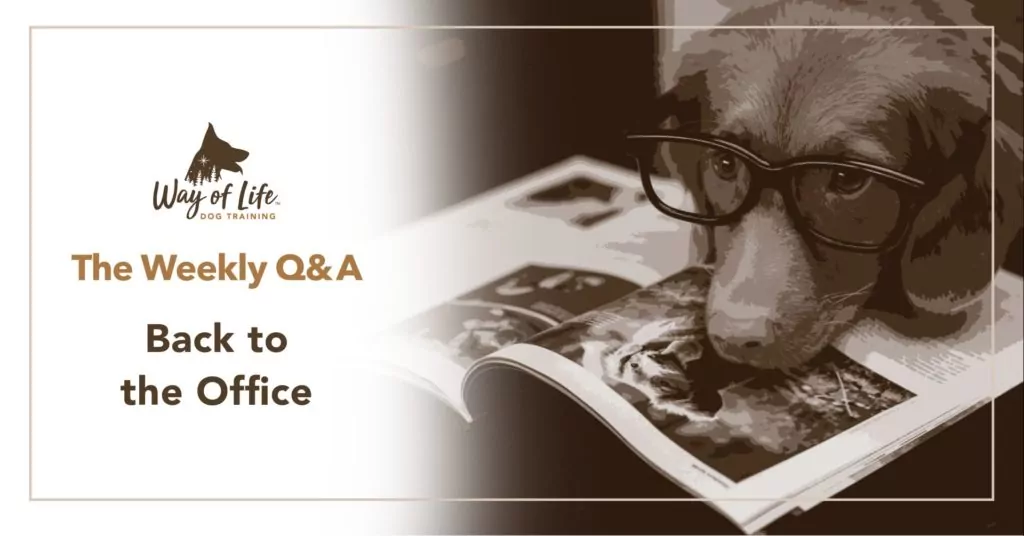
Q: After more than two years of working from home, we’re back at the office on a part-time basis. We’ve had our dog since before the pandemic, but she’s hardly been left alone all this time. We know she doesn’t suffer from separation anxiety, but we still feel bad because it’ll be a change for her. Is there a way to make this easier on all of us?
A: Great question and surely a concern for many others who are returning to the office, some to “hybrid” work arrangements and others to regular pre-pandemic schedules. It’s great to hear that your dog doesn’t suffer from separation anxiety, and your concern with how she will adapt to the change is legit.
A change in situation is stressful, surely, but also an opportunity to mature our dogs. Fluctuations in our human lives are inevitable and it’s our job to raise dogs that are sound, strong, and spirited enough to handle change. Here’s the thing though: we need to be the ones modelling a positive attitude around change. I know that many people are themselves stressed about leaving their animals behind, not realizing how much that feeds the animals’ anxiety.
Of course, there will be a period of adjustment for all involved but our attitude can make all the difference. Here are three reasons why your part-time return to the office is a good thing:
- Being away from home for some time is good for you. Yes, we might dread having to dress for work, commute, and get into our work selves. But ultimately, it’s good for us to step into a different space for a few hours, partake in our own kind of socialization, and come home ready for some canine quality time.
- Being away from home for some time is good for your dog. I’ll say this another way: Being alone is good for your dog. I never want to go back to how much time we spent away from our dogs pre-pandemic, but it’s good for them on many levels to be left alone for some of the time (more on that later!).
- Riding out changes such as this one is a good thing. Again, remember that changes in way of life constitute exercises in socialization. They are part of the experiences of rearing our dogs successfully. When we ride out changes calmly and confidently, dogs mature and our bonds deepen.
Above and beyond thinking about this change a little differently, there are many things you can do to facilitate the transition. One of the reasons that I’m such a proponent of crating dogs is precisely because it teaches them to be by themselves. I also coach my clients on making a habit of leaving their dogs alone for varying amounts of time. As well, the common advice of not making a big deal out of leaving or coming back is especially applicable if the dog is not entirely comfortable being alone just yet and/or has a more sensitive and clingy disposition. I also coach clients with multiple dogs in regularly taking some and leaving others behind.
Pandemic aside, the more consistent we’ve been with making separation and alone time facts of life, the easier the transition will be. While most dogs will adjust fine, some will likely exhibit separation anxiety and added measures will need to be taken. Please see the note below for a past feature on separation anxiety and stay tuned for more on this subject.
The issue of leaving dogs alone is an important one. Indeed, it’s a moral and ethical matter, and one significant enough to deserve further discussion down the road. One of the silver linings of the pandemic is that it has demonstrated much office work can be done remotely, and that our animals do not have to, and should not have to, be left alone for as much as they once were.
With that said, teaching our dogs to be alone confidently is good for them. In fact, it’s one of the best things we can do for their soundness, strength, and spiritedness. Please don’t hesitate to reach out to us with any concerns about the changes in your way of life post-pandemic and beyond!